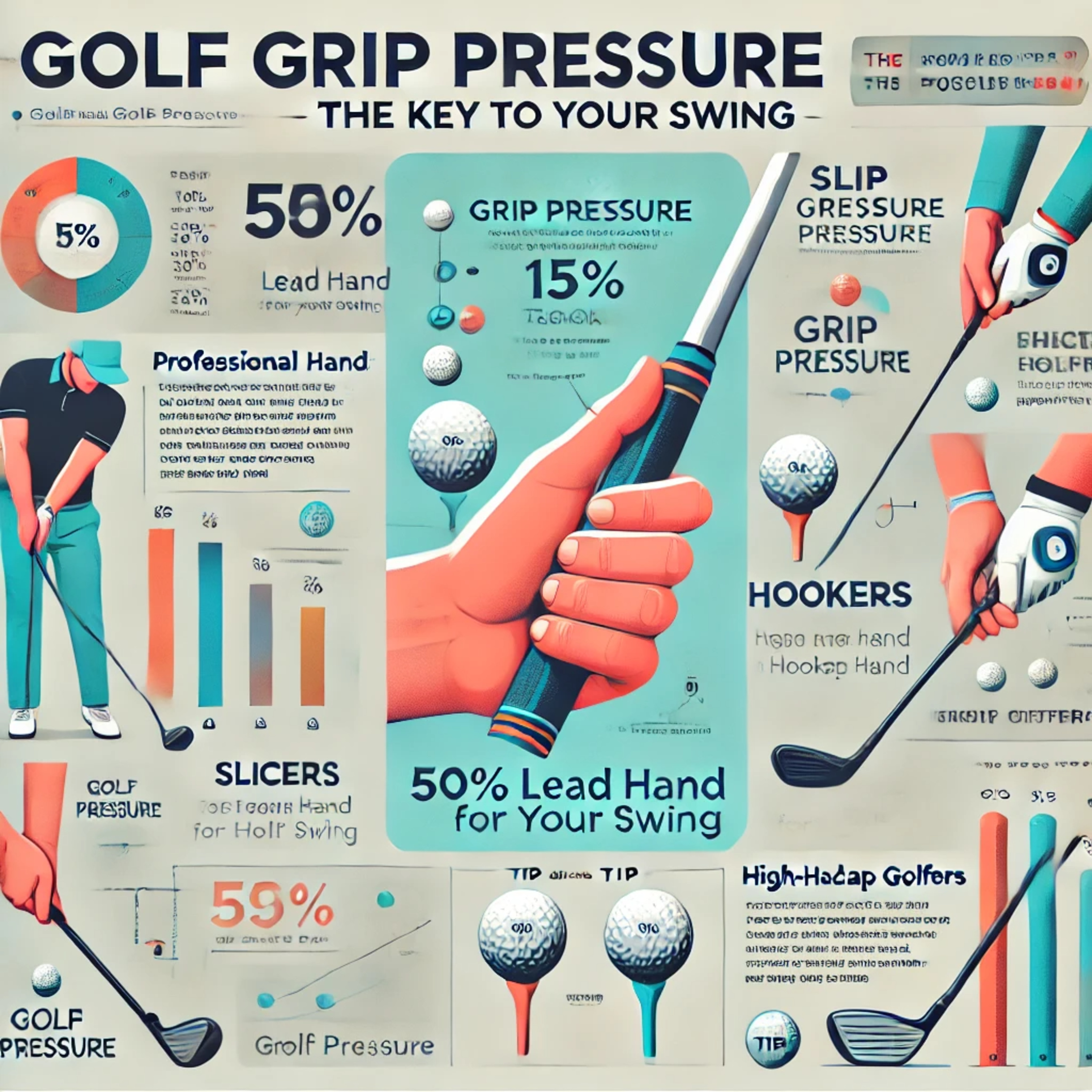#145 🏌️♂️ Golf Grip Pressure: The Key to Your Swing
- Author
- Golf247.eu
- Published
- Sun 23 Feb 2025
- Episode Link
- https://podcasters.spotify.com/pod/show/puttin-pro/episodes/145--Golf-Grip-Pressure-The-Key-to-Your-Swing-e2uts1i
📌🎙️ This podcast analyzes grip pressure in golf by comparing professional golfers with amateurs. It examines how grip pressure affects ball flight, particularly in relation to ⛳ slices and hooks. The podcast presents 📊 data showing that many golfers apply grip pressure incorrectly or even in reverse. It emphasizes that the ✋ lead hand plays a key role, while the 🤚 trailing hand should remain more constant. The speaker recommends 💪 exercises to improve grip pressure and strengthen the grip to increase swing speed and distance. It is suggested that the correct grip pressure technique is crucial for better golf performance.
👉 Grip pressure plays a vital role in different swing types and skill levels in golf. According to a podcast recording from 📅 February 23, 2025, grip pressure significantly influences whether a golfer hooks, slices, or achieves a professional level.
🔑 Key Insights on Grip Pressure:
🏆 Professional Golfers:
✔️ The grip pressure of the 🤚 right hand (trail hand) remains relatively constant throughout the swing at about 15% of maximum grip strength.
✔️ The ✋ left hand (lead hand) applies about 50% of maximum grip strength at setup, increases during the backswing, slightly loosens during transition, and strengthens again from downswing to impact.
🔄 Golfers Who Hook the Ball:
🔹 Start with too light a grip pressure in both hands.
🔹 The ✋ left hand strengthens continuously like a pro, but the 🤚 right hand becomes very strong at the end of the backswing, then weakens before impact, causing a hook.
🎯 Golfers Who Slice the Ball:
🔸 Have too light a grip pressure at setup, causing an "over-the-top" motion.
🔸 The grip pressure of the 🤚 right hand is strongest at the end of the backswing, then drops significantly in the downswing before reactivating near impact.
🔸 This imbalance causes the club to "go over the line," leaving the clubface open and leading to a slice.
❌ High-Handicap Golfers:
⚠️ Apply grip pressure incorrectly and in reverse.
⚠️ Start with almost 0% grip pressure in both hands, relying mostly on the 🤚 right hand.
⚠️ During the swing, grip pressure can exceed 100%, leading to inconsistency.
🏌️♂️ Different Grip Pressure for Different Shots:
Grip pressure in a full swing differs from that used in chipping, bunker shots, or putting. Using a grip strength training device 🏋️ is recommended to improve grip strength. A stronger grip enables firmer club handling and faster movement, potentially increasing distance.
✅ Pro Tip: Focus on pulling with the ✋ left hand instead of pushing with the 🤚 right hand.
🖐️ Try removing the thumb and index finger of the right hand from the club to avoid gripping too tightly.
⚡ The pressure should mainly be in the last three fingers of the ✋ left hand.
🔄 Practice swings with a 50% to 70% left-hand grip pressure can help create a smoother swing.
📊 Key Differences Between Pros & Slicers:
🏌️♂️ Professional Golfers:
✔️ Maintain a consistent grip pressure throughout the swing.
✔️ Right hand: 15% grip pressure.
✔️ Left hand: 50% grip pressure at setup, increases in backswing, loosens in transition, then strengthens at impact.
⚠️ Golfers Who Slice:
❌ Start with too light a grip pressure.
❌ Right-hand grip pressure peaks at the backswing, then drops sharply before impact.
❌ This imbalance causes the club to go over the line, leaving the clubface open and resulting in a slice.
🔥 Final Takeaway:
Professional golfers maintain a more consistent and well-balanced grip pressure, while slicers tend to start too light and distribute it unevenly throughout the swing—leading to swing faults that result in a slice. 🎯
